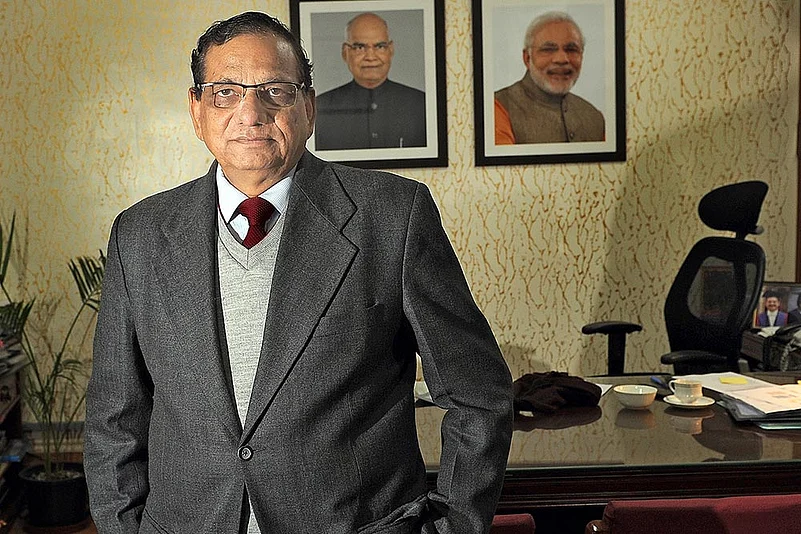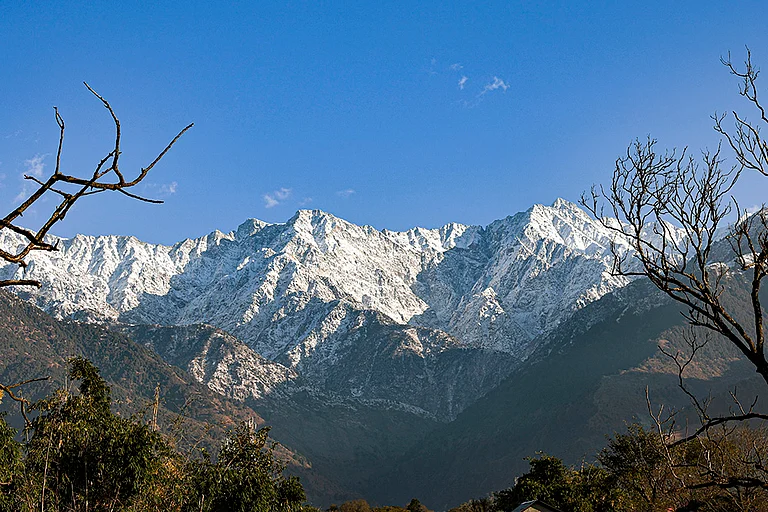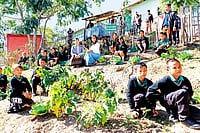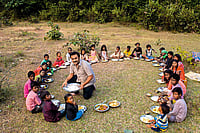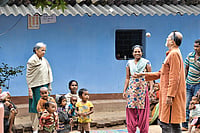Dr Vinod Paul is an internationally renowned paediatrician, academic, medical researcher and public health exponent, especially newborn health. A member of NITI Aayog, he leads the health and nutrition verticals. In a conversation with Damayanti Datta, Dr Paul talks about healthcare initiatives such as Ayushman Bharat and Poshan Abhiyaan, and how to resolve the problem of malnutrition. Edited excerpts:
Several key reforms of the Centre address the health, wellbeing and nutrition of vulnerable people, yet rarely do we hear of them spoken together. Why is that?
We need to talk more about them together because one without the others is incomplete. First, you must appreciate that Ayushman Bharat has two pillars: one relates to primary healthcare and the other to financial protection for health expenditure in secondary and tertiary care hospitalisation. Both are complementary. Poshan Abhiyaan targets stunting, undernutrition and anaemia, particularly among children and women. Bringing their incidence down to 25 per cent of children by the year 2022 is our goal. All these should be seen together, but it is often the more visible health protection scheme that gets attention in the media even though the same Budget speech expressed commitment to both. They are linked and primary healthcare is perhaps even more important overall because it has to do with disease prevention, early detection, treatment and a nirogi (disease-free) society. That’s the bedrock of our future health system.
The vision of ambitious large-scale changes are often clear to policymakers, but not so obvious to others. How do you see the connect between these policies?
The connect lies in clinical science, medical science, technology and also, on the ground. Remember, Poshan Abhiyaan is ‘children first’. Now, children’s undernutrition has at least three broad dimensions. One is being born small—you are already stunted and undernourished. And that happens in 15-18 per cent of our children. What happens before birth, during the stage of foetal growth, is responsible for this.
We must appreciate that in addition to this, mothers’ health plays a huge role. The connect is with the mother—her as a woman, an adolescent and even as a child. If she was born small or was stunted, there are good reasons to believe that it will not be possible for her to sustain a full-sized baby. If the mother gives birth before the age of 20, then too, the baby will be small. All these impose restrictions on foetal growth. And that intergenerational aspect suppresses our true genetic potential, which is now believed to be a universal potential. If there is deprivation across generations, it is an epigenetic factor (changes in the DNA from environment and lifestyle that might be passed across generations) on top of other causes.
Will improving mothers’ health change the malnutrition scenario in the country?
It’s not that simple. What’s at work here is the health system, a mother’s socio-economic status, inter-pregnancy intervals, age, size, health etc. There is also the question of epigenetic inheritance. All these determine whether a baby will be small. Foetal growth retardation contributes to 20-25 per cent of stunting.
Then comes the second part: being stunted also has to do with illnesses, especially diarrhoeal diseases, pneumonia, measles, tuberculosis and whooping cough. These are severe diseases that can kill. Those who survive pay the price in terms of losing weight. And then their undernutrition intensifies. Such neonatal diseases account for 25-30 per cent of undernutrition in our country.
So what can be done about it? Illness prevention, early detection and treatment. The revolutionary connect we need to make here is with Swachh Bharat Abhiyan. It is estimated that if you have WASH—water, sanitation and hygiene—about 15 per cent of undernutrition can be knocked off. Take diarrhoea, for instance. Rotavirus causes over 50 per cent of diarrhoea cases. Under Poshan Abhiyaan, we have introduced rotavirus vaccines. Then comes early treatment. What works in diarrhoea is zinc supplementation. Just like vaccines and WASH, zinc is important to prevent stunting. It is part of our national programme. We have done well in scaling up zinc coverage to 30-35 per cent; it should become 80 per cent. This programme is connected to primary care, which is what Ayushman Bharat is about. That’s where people should see the connect.
Where do food, nutrition and eating habits fit in?
That is the third part. Poshan Abhiyaan includes breastfeeding. With this is linked another aspect of disease prevention: how we look after small babies. So we have a programme called Home-based Newborn Care, where accredited social health activists visit homes, look after babies and promote optimum feeding. There is a fourth mantra: feeding children carefully. Eighteen per cent of children are born small and 25-30 per cent are underweight. We are pushing for feeding of small babies. Here Poshan steps in.
But something drastic happens at six months: the rate of stunting and undernutrition doubles between six to 18 months. Illnesses start as the child becomes mobile. Also, at this stage, breastfeeding alone is not adequate—it has to be topped up with ‘complementary feeding’. In that, we don’t do very well. There is an indicator between six and 18 months called ‘adequate feeding’. That falls below 10 per cent for Indian children.
Feeding is the biggest problem in India: we don’t start giving food optimally, we don’t give the right amount, we don’t give the energy requirement children of a particular age need, we don’t realise how much food a child requires and we don’t give the right food groups. And this is rampant across socio-economic lines.
Which of these are easier to change?
Primary care and vaccines. And that’s what we have have focused on and done well. The most plastic aspects are vaccine-preventable diseases, zinc supplementation, early treatment and cleanliness.
Which is the toughest challenge?
The biggest challenge is behaviour. A child’s diet is not optimum in India because food is part of human behaviour and set culturally over time. My teacher said in the very first week of medical training: a one-year-old child needs to eat half of what you eat because she is growing. People don’t get that. We are not advocating anything not available at home—wheat and/or rice, dal, vegetables, fruits and milk. And you need a dash of fat. We don’t realise the importance of calorie density, the amount to be fed, frequency and food groups. And that is the reason why children are stunted and malnourished in India.
Also Read:






